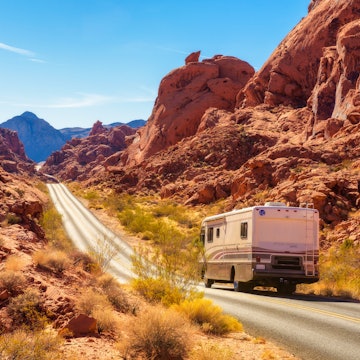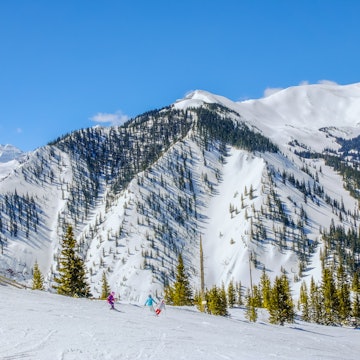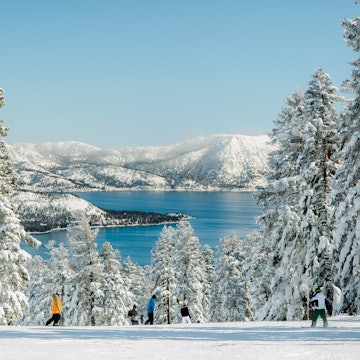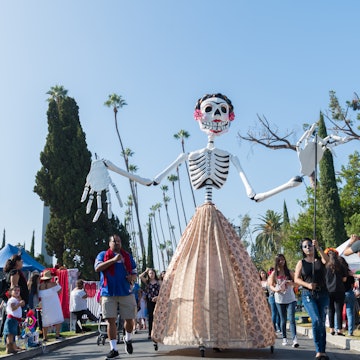
First time Los Angeles: discover the best of the City of Angels
Aug 22, 2014 • 6 min read

People think they know Los Angeles, even, sometimes especially, if they’ve never been: a land of starstruck dreamers, Tinseltown magic, traffic-numbed freeways, silicone-inflated bimbos and jacked-up himbos.

But dig deeper and your first trip will be a lot more surprising – and rewarding. America’s second-largest city offers a mini-UN of cultures and a natural backdrop just as diverse: from beaches for swimming, sunning and surfing, to mountains for hiking, skiing and city- or star-gazing. Once downtrodden neighborhoods are being regenerated with new museums, concert halls and eateries to entertain and feed the visitor. And the expanding transit system is making it all easier to reach than ever before.
Stats
Population: around 10 million (county), 4 million (city)
Visitors per year: around 45.5 million (2015), most from within the US
Languages: English, with Spanish a close second; also Korean, Russian, Chinese, Tagalog, Thai and about 135 others.
Daily budget: $200 including mid-range hotel and restaurant meals
Best time of year to go: Apr-Sep
Neighborhoods & sights
LA defies the notion of a traditional city. Rather, think of it as a series of small cities connected, and sometimes separated, by famously wide boulevards and 12-lane freeways. There’s a bewildering amount to see in this massive county, but the following neighborhoods will give you a good start.

Hollywood
If the name Hollywood evokes the very essence of glitz and glamour, the neighborhood Hollywood may be a bit of a shock; the glitz disappeared decades ago, but, like the best of starlets, it’s slowly making a comeback. TCL Chinese Theater has been the epicenter of that glamour since it opened in 1927, with stars’ foot- and handprints in the cement, while the legendary, 17,000-seat Hollywood Bowl remains an eternal attraction. A jumble of props, costumes and photos from classic films makes up the Hollywood Museum, housed in the building where makeup impresario Max Factor turned Marilyn Monroe and Lucille Ball into icons.
If that’s old Hollywood, you’ll find new Hollywood in the Dolby Theatre where today’s stars sashay up the red carpet for the Academy Awards. Next door, peek at the Hollywood Sign through the archways of the Hollywood & Highland Center, filled with places to eat from steaks and seafood to cream puffs. Old and new meet masterfully in the renovated 1920s movie palaces El Capitan and Egyptian Theater. Or for a hike with a view over the urban sprawl, drive to Griffith Park and its famous observatory.
Stay at the venerable Hollywood Roosevelt Hotel, where the first Academy Awards ceremony was held in 1929. 25 Degrees Burger Bar (25degreesrestaurant.com/los-angeles) here piles ‘em high and tasty. Or sleep at the Loews Hollywood Hotel where today’s stars cavort, party and meet the press on Oscars night.
Charlie Chaplin used to knock back vodka gimlets and Raymond Chandler penned scripts at Musso & Frank, Hollywood’s oldest bar and eatery (1919). Twenty-first-century pretty people get their LA glam on beyond the velvet rope at Emerson Theatre, with prohibition cocktails, scantily clad burlesque dancers and hip-hop.

Santa Monica & Venice Beach
Santa Monica and adjacent Venice offer the quintessential LA beach scene: surf dudes, volleyballers, skate punks, string bikinis, latte-sipping bohos, yoga freaks, cyclists, psychics and street performers are all found along this stretch of sublime coastline. Santa Monica Pier, the end of the iconic Route 66, is dominated by an old-school amusement park, while a mile or so south, the Venice Beach Boardwalk is an LA must: a wacky carnival alive with everything from hula-hoop magicians and bodybuilders, to sellers of Mexican Day-of-the-Dead crafts and, at times it seems, the entire rest of the world.
The stylishly renovated Palihouse Santa Monica (circa 1927) offers apartment-sized rooms and a lobby of terracotta floors, beamed ceilings and a coffee bar. Santa Monica’s landmark farmers markets (Wednesdays and Saturdays) offer some of America’s best produce; the rest of the time, browse dozens of restaurants around Third Street Promenade, the commercial hub and pedestrian paradise.
Venice’s Hotel Erwin has a surf-cool vibe steps from the beach; its ground floor restaurant, Hash, and rooftop lounge, High, are local gathering spots. Nearby Abbot Kinney Boulevard was recently named GQ’s coolest street in America, filled with tip-top shops and trendy restaurants.

Downtown Los Angeles
A mere 15 years ago, LA’s Downtown core was a ghost town after work hours. Nowadays, ‘DTLA’ has a 24-hour scene and some of the western USA’s top cultural institutions. Walt Disney Concert Hall is hometown starchitect Frank Gehry’s masterpiece and home to the Los Angeles Philharmonic. Steps away are the Museum of Contemporary Art (MOCA) and the Broad Museum (thebroad.org), with a world-renowned contemporary art collection. The Central Library is a showplace belying the reputation that Angelenos don’t read.
The Ace Hotel is hipster heaven, from its ground floor café to its see-and-be-scene roof deck. Fill up on dim sum lunch or Peking duck dinner in Chinatown, ramen in Little Tokyo or fresh Mexican on Olvera Street, LA’s original settlement. Or browse the food stalls of Grand Central Market.
What to pack
A jacket or wrap Even if it’s hot during the daytime, nights can be chilly.
Sunglasses Multiple pairs, like every true Angeleno.
Sunscreen
Hands-free device for your phone It’s illegal to hold your phone behind the wheel.
Patience For those freeways.
Sense of humor For the odd characters you will encounter.
Getting around
Los Angeles International Airport (LAX) is the main gateway. Taxis around town ($30-50) take 30 minutes to one hour. Door-to-door shuttles run $16 to $27 but usually involve stops en route. Nonstop FlyAway buses ($8) connect LAX with Downtown and Santa Monica. Metro bus and rail are the cheapest but most time-consuming options.
The majority of people get around by car, but traffic can be nightmarish (especially during rush hour, 7-10am and 3-7pm) and parking expensive. LA’s Metro subway is steadily growing, and already connects Downtown with popular destinations like Hollywood and Santa Monica. Metro bus/rail and Santa Monica’s Big Blue Bus fares are $1.75 and $1.25 respectively.
Safety
The movies notwithstanding, crime is relatively rare in LA, although usual big-city precautions apply. Don’t flash money or leave luggage or valuables visible in your car, and if a street feels dodgy (as parts of inland Venice, occasional stretches around Hollywood Boulevard, and Downtown's skid row can), leave.
Etiquette
Dress Shorts and flip-flops for the beach, hip casual for Downtown and Hollywood.
Tipping As in the rest of the US, tipping is not optional. Bartenders should receive at least $1 per drink if you want to get served next time round; parking valets will be happy with $2; and restaurant staff will expect 18-20% (though the gratuity is often included for parties of 6 or more – check the bill when it arrives).
Driving LA drivers can be intolerant of rookie mistakes. Keep pace with traffic, don’t drive slowly in passing lanes, and always use turn signals. Drunk driving and red light violations are strictly enforced.
Celebrities If you spot someone famous, act like a local and keep it together man. Best to let them go their merry way, or, if you’re a huge fan, a low-key “I love your work” and a kind smile will do nicely.
Booking ahead
Book hotels at least a month in advance; book top restaurants one to two weeks ahead of time (tip: lunch reservations are a lot easier to come by than dinner ones).
Angelenos like their entertainment so check calendars well in advance as top concerts can sell out as soon as tickets go on sale.
Andrew Bender is a true Angeleno, not by birth but because he’s made it his own. This native New Englander began his LA life in “the Industry” (that’s film, to the rest of us) but has been writing about travel from his home near Santa Monica beach for 15-plus years. He has since contributed to over three dozen LP titles (including Los Angeles, San Diego & Southern California), the Los Angeles Times and many other publications, and he writes the Seat 1A travel site for Forbes.com.
This article was updated in August 2016.















